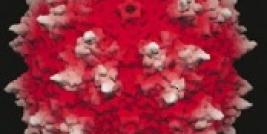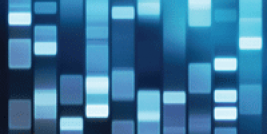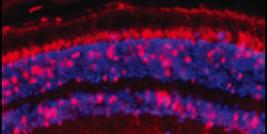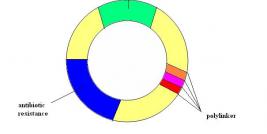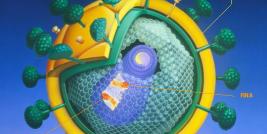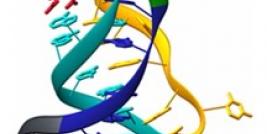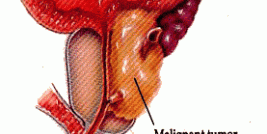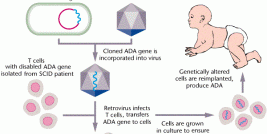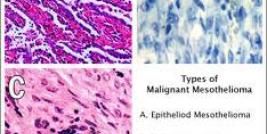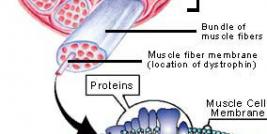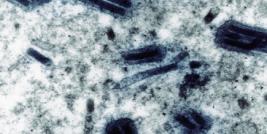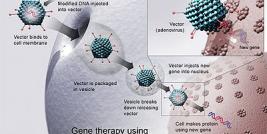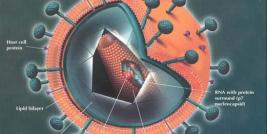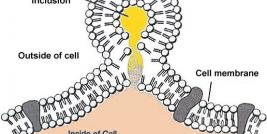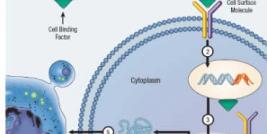Molecular Biology of the Alphavirus
Alphaviruses consist of an enveloped nucleocapsid containing a single-stranded RNA genome of the positive sense, some 12 kb in length. The viral non-structural proteins, nsP1, nsP2, nsP3 and nsP4 are encoded on the left two-thirds of the genome and are the first viral products to be translated following viral entry. They are initially translated as a polyprotein that is cleaved into four proteins, which form the viral replicase. Upon assembly, the replicase binds to an untranslated region in the 5’ end of the viral genome, mediating the synthesis of the complementary negative strand of RNA. The viral replicase then binds to the negative strand, which serves as the template for the synthesis of multiple copies of the positive strand genome. Moreover, the negative strand also acts as the template for the structural genes located on the right one-third of the genome (see diagram one).
Diagram One: Alphavirus Genome
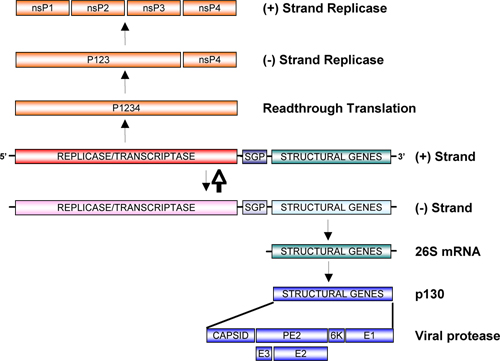
After activation of the sub-genomic promoter, the viral replicase mediates synthesis of the 26S RNA species that serves as the message encoding the structural proteins. The RNA genome is subsequently packaged into the nucleocapsid and new viral particles bud from the cell by a similar mechanism adopted by the retroviruses. Given that alphaviruses are able to amplify RNA in the cytoplasm, independently of the nucleus, they have been extensively explored as potential gene transfer agents.
Recombinant Alphaviral Vectors
In order to create a viral vector from alphaviruses, the structural genes are replaced with the therapeutic transgene. As a consequence, during vector production the structural genes have to be provided in trans by co-transfection with a helper plasmid (see diagram two).
Diagram Two: Alphavirus Vector
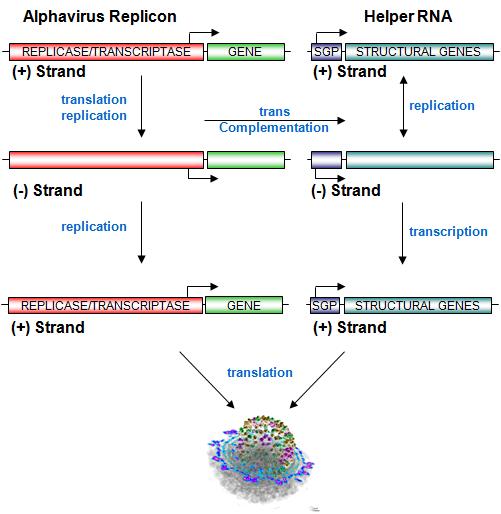
One of the limiting factors in alphaviral vector production is that the viral replicase inhibits the activity of RNA polymerase II, hence the viral RNA genome is first transcribed in vitro prior to its introduction into producer cells by electroporation. Typically, both the recombinant vector genome expressing the therapeutic gene and the helper virus are transcribed using SP6 polymerase and transfected into BHK21 cells. In order to enhance safety, the helper virus contains a mutation in a viral glycoprotein so that recombinant viral particles require activation by an external protease prior to their use. Alphaviruses are very efficient at taking over the machinery that controls host protein synthesis, and as such over 90% of the protein translated in an infected cell is viral. The result is that cells infected with recombinant alphaviral vectors die after three to four days, thus limiting their application in gene therapy. Despite of this alphaviruses can be successfully applied in the production of recombinant protein from mammalian cells in vitro, often generating enough protein for x-ray crystallography studies.

